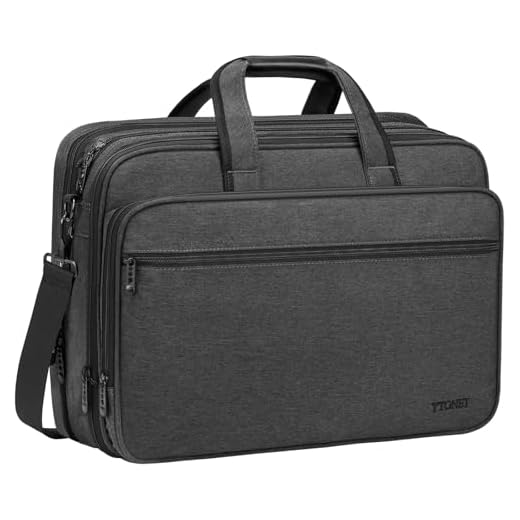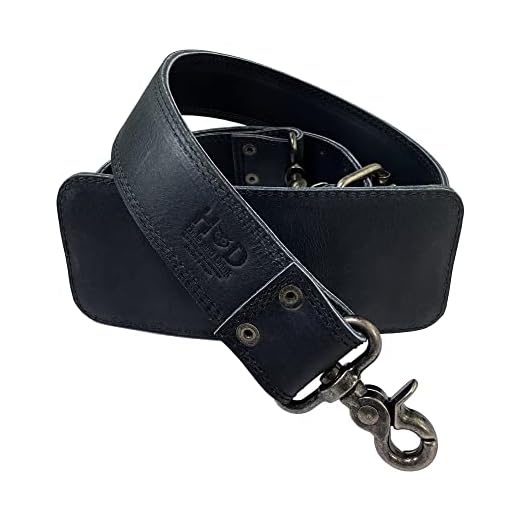



A typical carrying strap measures between 30 and 60 inches, accommodating various body types and preferences. For optimal convenience, a length of around 50 inches is often recommended for most users, providing a comfortable fit across different shoulder heights and styles.
Customization options can enhance usability. Look for adjustable attachments on your choice of accessory. This feature allows you to easily modify the length to suit your specific requirements, ensuring a snug yet comfortable fit.
Consider the purpose of your item and how you intend to wear it. If you’ll be cycling or walking extensively, a shorter strap may reduce the risk of swaying and enhance stability. For a more casual look, a longer option allows for stylish wear across the body.
Common strap lengths for different messenger bag sizes
For small designs, straps typically measure around 40 to 50 inches, allowing for a snug fit across the body while maintaining comfort. Medium models often feature lengths between 50 and 60 inches, accommodating various body types and facilitating cross-body use. Larger options generally come with straps ranging from 60 to 70 inches, providing ample adjustability for those who prefer a looser fit or wear bulkier clothing.
Additional customization can often be found; some brands offer extendable components, enabling adjustments well beyond standard measurements. For those using these carriers primarily for commuting, consider a length that allows for easy access without compromising functionality.
When selecting, factor in personal preferences and usage scenarios. If the intention is to carry around heavier items or utilize the bag for long periods, opting for a length that provides both comfort and support is recommended.
Adjustable versus fixed straps: what to know
Choose adjustable straps for flexibility in positioning and comfort. These allow users to modify the length according to personal preference or outfit, accommodating various carrying styles. Whether worn across the body or on one shoulder, being able to tweak the fit enhances usability, especially during extended use.
Fixed straps, on the other hand, offer simplicity and reliability. They maintain a consistent length, ensuring that the holder won’t need to worry about the strap slipping during movement. This can be particularly useful for those who prefer a stable setup when commuting or accessing essential items quickly.
When considering durability, adjustable variants may incorporate additional components, potentially increasing wear points. Fixed options tend to have fewer moving elements, which might lead to greater longevity in certain circumstances. However, for those who frequently switch between different carrying settings, investing in a high-quality adjustable design is advisable.
For added functionality, look for products that combine both types. Some holders feature detachable straps, allowing users to customize their experience. Such versatility can be beneficial for various purposes, whether needing to carry books, tools, or even high-quality items like the best edc backpack for work.
Ultimately, assess your lifestyle needs. If frequent adjustments are required, adjustable choices are superior. For straightforward applications where stability is paramount, fixed straps might suffice. Consider specific use cases, such as outdoor activities or urban commuting, and choose accordingly. Also, for outdoor gear needs, check out the best budget pressure washer philippines for reliable tools. Furthermore, other accessories like the best most durable umbrella can complement your carrying system effectively.
Factors influencing strap length preferences
Body shape significantly impacts the preferred length of carrying mechanisms. For individuals with broader shoulders, longer lengths may provide better comfort and balance, while those with slimmer builds may opt for shorter options for a snug fit.
The weight and contents of the sack also dictate strap selection. Heavier loads necessitate additional support, leading users to choose longer, adjustable alternatives for optimal weight distribution.
Style preferences play a crucial role. Casual users often prioritize aesthetic appeal, opting for trendy designs without compromising on functionality. Conversely, professionals may favor simplicity and practicality, choosing lengths that accommodate swift access without hindrance.
Activity type is another determining factor. Commuters who cycle or walk may lean towards adjustable solutions that allow quick length adjustments for varying situations. In contrast, leisure users may prefer fixed lengths that align with their personal style.
Manufacturers often cater to demographic variations, providing a range of sizes to suit different body types and lifestyles. Exploring options tailored to specific needs ensures a more personalized experience.
Measuring Your Ideal Strap Length
To achieve a comfortable fit, measure from your shoulder to where the accessory will sit on your body. Use a fabric measuring tape or a piece of string, then measure it against a ruler for accuracy.
Stand up straight and let your arm hang naturally at your side. This position ensures that you account for movement and overall comfort. Consider wearing the clothing you typically don, as bulk can influence fitting.
For those who prefer customization, try out various lengths with similar items. Some brands offer adjustable connectors, allowing you to experiment with the best position for your needs.
Always include extra length if you plan to wear it across the body or if you prefer a looser fit. This allows flexibility for various carrying styles, whether you prefer it high on your side or lower on your hip.
Finally, document your measurements and preferred lengths for future reference. This way, when selecting an accessory, you already have your ideal specifications in mind.
Choosing the right strap length for comfort and style
For optimal ease and aesthetic appeal, select a length that allows the carrier to rest comfortably at hip level. This position facilitates easy access while ensuring the load is distributed evenly across the body.
Consider the following points:
- Body Size: Taller individuals may prefer longer lengths to accommodate their height, while shorter users often opt for shorter options for a more proportionate look.
- Wear Style: Decide whether the accessory will be worn on one shoulder or crossbody. For crossbody carry, a longer option generally provides better comfort and balance.
- Clothing: Clothing thickness can influence your choice. If wearing bulky outerwear, a longer length might be necessary to ensure a comfortable fit.
- Occasion: Consider the context in which the item will be used. Casual settings might allow for a relaxed fit, while professional environments may call for a more tailored approach.
Experimentation with various lengths is advisable to determine what feels best during extended use. Adjust your choice based on personal preference and activity level, ensuring that both comfort and style are prioritized.







